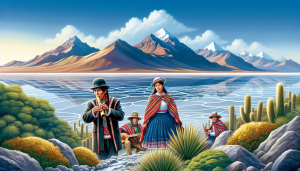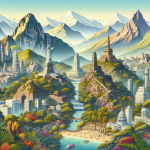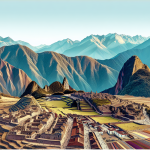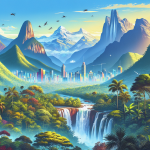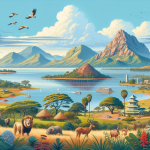Discovering Bolivia: A Journey Through South America’s Hidden Gem
Nestled in the heart of South America, Bolivia often remains an understated gem compared to its more frequented neighbors like Brazil, Peru, and Argentina. However, those who venture into this landlocked country are quickly captivated by its diverse landscapes, rich cultural heritage, and unique experiences that encompass everything from the expansive salt flats of Uyuni to the bustling streets of La Paz. This guide aims to uncover Bolivia’s myriad attractions, offering insights into its historical significance, natural beauty, and the vibrant traditions that define its people. Whether you’re an adventurer seeking adrenaline-pumping activities, a history buff eager to explore ancient civilizations, or a culture enthusiast keen on immersing in local festivities, Bolivia promises an unforgettable journey. Join us as we delve deep into what makes Bolivia a must-visit destination in South America, offering tips, highlights, and essential information to enrich your travel experience.
The Mesmerizing Salt Flats of Uyuni
Bolivia’s Salar de Uyuni is arguably the most iconic landmark in the country. This expansive salt flat, stretching over 10,000 square kilometers, is the largest in the world and presents an otherworldly landscape that feels like stepping onto a different planet.
Exploring the Salt Flats
Visiting Uyuni is an experience like no other. During the dry season, the salt flats form a vast, white expanse that stretches as far as the eye can see. The flats are incredibly photogenic, with tourists often taking creative perspective shots against the stark, white backdrop. In the rainy season, a thin layer of water transforms the salt flats into a giant mirror, reflecting the sky and creating a surreal, dreamlike environment.
The Train Graveyard
Just outside the town of Uyuni lies the Train Graveyard, another popular attraction. Here, you’ll find rusting locomotives from the early 20th century, when mining was a significant industry in Bolivia. The abandoned trains, set against the desolate landscape, offer a hauntingly beautiful scene and a glimpse into Bolivia’s industrial past.
La Paz: The World’s Highest Capital
At an altitude of around 3,650 meters (11,975 feet), La Paz is the highest administrative capital in the world. The city is a fascinating blend of the old and new, where modern skyscrapers rise against a backdrop of snow-capped mountains and traditional markets buzz with activity.
Must-Visit Attractions in La Paz
- Witches’ Market: This is one of the most unique markets you’ll ever visit. Located in the heart of the city, the market is a treasure trove of traditional Andean artifacts, medicinal herbs, and even dried llama fetuses, which are used in Aymara rituals.
- Valley of the Moon: Just a short drive from La Paz, this bizarre landscape of eroded rock formations offers excellent hiking opportunities and breathtaking views.
- Mi Teleférico: La Paz’s cable car system is not just a means of transportation but also a fantastic way to get panoramic views of the city and its dramatic surroundings.
Cultural Insights
La Paz is a melting pot of cultures, where indigenous traditions coexist with Spanish colonial influences. The city comes alive during festivals like Gran Poder, a dazzling event featuring colorful costumes, traditional music, and dance.
Sucre: Bolivia’s Constitutional Capital
While La Paz serves as the administrative capital, Sucre is Bolivia’s constitutional capital and a UNESCO World Heritage Site. Known for its well-preserved colonial architecture and pleasant climate, Sucre is often referred to as the “White City” due to its whitewashed buildings.
Historical Significance
Sucre played a pivotal role in Bolivia’s fight for independence from Spain. The Casa de la Libertad, located in the city center, is where Bolivia’s Declaration of Independence was signed in 1825. Today, it serves as a museum that offers invaluable insights into the country’s history.
Attractions in Sucre
- Plaza 25 de Mayo: This central square is the heart of Sucre and is surrounded by important landmarks, including the Metropolitan Cathedral and the historic Casa de la Libertad.
- Dinosaur Tracks: Just outside the city, at Parque Cretácico, you can find one of the world’s largest collections of dinosaur tracks, offering a fascinating glimpse into prehistoric times.
The Amazon Basin: Bolivia’s Lush Wilderness
Bolivia’s portion of the Amazon Basin is a haven for biodiversity, offering a different kind of adventure compared to the country’s high-altitude cities and arid landscapes.
Madidi National Park
One of the most biodiverse places on Earth, Madidi National Park is a must-visit for nature enthusiasts. The park is home to a staggering array of wildlife, including jaguars, giant otters, and over a thousand species of birds. Guided tours offer the chance to explore this pristine environment, often involving boat trips along the Tuichi River and hikes through dense jungle.
Rurrenabaque: Gateway to the Amazon
The town of Rurrenabaque serves as the primary gateway to the Bolivian Amazon. From here, you can embark on various tours that range from jungle expeditions to pampas tours, where you’re likely to spot caimans, capybaras, and pink river dolphins.
Lake Titicaca: The Sacred Lake
Straddling the border between Bolivia and Peru, Lake Titicaca is the largest lake in South America and is considered the highest navigable lake in the world. The lake is imbued with cultural and spiritual significance, particularly for the indigenous Aymara and Quechua people.
Isla del Sol
The Isla del Sol (Island of the Sun) is one of the most important cultural sites on Lake Titicaca. According to legend, the island is the birthplace of the Inca civilization. The island offers ancient ruins, terraced landscapes, and stunning views of the lake, making it a popular destination for hikers and history enthusiasts.
Copacabana
The town of Copacabana, located on the shores of Lake Titicaca, is known for its religious significance and vibrant festivals. The Basilica of Our Lady of Copacabana is a major pilgrimage site, drawing visitors from all over Bolivia and beyond.
Cochabamba: The City of Eternal Spring
Known for its pleasant climate, Cochabamba is often referred to as the “City of Eternal Spring.” The city is situated in a fertile valley and is surrounded by lush hills and mountains.
Cristo de la Concordia
One of the city’s most prominent landmarks is the Cristo de la Concordia, a towering statue of Christ that stands even taller than the famous Christ the Redeemer statue in Rio de Janeiro. You can reach the statue via a cable car or by hiking up a series of steps, both offering spectacular views of the city.
Mercado La Cancha
Cochabamba is also famous for its markets, and Mercado La Cancha is one of the largest in South America. Here, you can find everything from fresh produce to traditional crafts, making it an excellent place for shopping and experiencing local life.
Potosí: The Silver City
The city of Potosí is a testament to Bolivia’s rich mining history. Once one of the wealthiest cities in the world due to its vast silver deposits, Potosí offers a fascinating glimpse into the past.
Cerro Rico
The Cerro Rico (Rich Hill) is the source of Potosí’s silver wealth. Today, you can take guided tours of the mines, where you’ll learn about the grueling conditions faced by miners both past and present.
Colonial Architecture
Potosí is home to a wealth of colonial architecture, including the San Lorenzo Church and the Casa Nacional de Moneda, which now serves as a museum showcasing the history of the city and its silver mines.
Tarija: Bolivia’s Wine Country
While Bolivia might not be as well-known for wine as countries like Argentina or Chile, the region of Tarija is slowly gaining recognition for its vineyards and wine production.
Valle de la Concepción
The Valle de la Concepción is the heart of Bolivia’s wine country. Here, you can tour vineyards, sample local wines, and enjoy the stunning scenery. The region is particularly famous for its Muscat of Alexandria grapes, which produce sweet, aromatic wines.
Wine Festivals
Tarija hosts several wine festivals throughout the year, where you can taste a variety of wines, enjoy traditional music and dance, and immerse yourself in the local culture.
Practical Information for Traveling in Bolivia
Before you embark on your journey to Bolivia, here are some practical tips to help you make the most of your trip.
Best Time to Visit
The best time to visit Bolivia depends on the regions you plan to explore. The dry season (May to October) is ideal for visiting the salt flats and highland cities, while the wet season (November to April) is better for exploring the Amazon Basin.
Health and Safety
Altitude sickness is a common concern for travelers visiting high-altitude areas like La Paz and Potosí. It’s essential to acclimatize gradually and stay hydrated. In the Amazon Basin, precautions against mosquito-borne diseases are necessary.
Getting Around
Bolivia’s transportation infrastructure is improving, but travel can still be challenging, particularly in remote areas. Domestic flights are a convenient option for covering long distances, while buses are the most common mode of transport for shorter journeys.
Conclusion
Bolivia is a land of contrasts, where breathtaking natural landscapes coexist with rich cultural heritage and vibrant traditions. From the surreal salt flats of Uyuni to the bustling streets of La Paz, the ancient ruins of Isla del Sol to the lush wilderness of Madidi National Park, Bolivia offers a wealth of experiences for every traveler. By exploring this hidden gem, you’ll gain a deeper appreciation for the beauty and diversity of South America. So, pack your bags and get ready to discover the many wonders of Bolivia—you won’t be disappointed.
For more information on planning your trip to Bolivia, check out this comprehensive guide by Lonely Planet.
